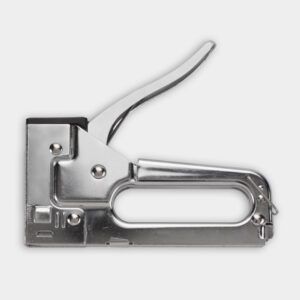We may be compensated if you purchase through links on our website. Our team is committed to delivering honest, objective, and independent reviews on home products and services.
Protecting your landscape from deer can be challenging, as these animals can quickly devastate young trees and prized shrubs, leaving homeowners frustrated and plants struggling to survive. In this article, we’ll explore effective methods to safeguard your small trees and shrubs from deer damage so that your garden remains beautiful and thriving. In the video above, This Old House landscape contractor, Roger Cook, explains practical techniques for deer-proofing vulnerable plants.
Deer Feeding Habits
Deer are opportunistic feeders and often munch on easily accessible plants near the edges of wooded areas or in suburban landscapes. They tend to be most active during dawn and dusk, making these periods prime times for garden damage.
Here are a few plants that are particularly attractive to deer:
- Arborvitae
- Azaleas
- Fruit trees
- Hostas
- Rhododendrons
- Yews
Knowing which plants are most vulnerable can help you prioritize protection efforts and consider deer-resistant alternatives.
Physical Barriers for Deer Protection
One of the most effective ways to protect small trees and shrubs from deer damage is by creating physical barriers.
Deer Netting
Deer netting is an affordable and effective solution for protecting individual plants or small groups of trees and shrubs. To install deer netting, follow these steps:
- Trim the branches on the upper portion of the tree using hand pruners to prevent unnecessary damage.
- Drive wooden stakes into the ground around the tree, spacing them 4–6 feet apart for stability.
- Wrap the deer netting around the wooden stakes, securing it at the top and bottom with 1/2-inch staples.
- Attach the netting to each post with three or four cable ties for added security.
- Drive in one staple at each cable tie to prevent shifting or sagging.
Fencing
For larger areas or sections with multiple plants, use fencing as an effective deterrent. Deer fencing options include electric fencing (where permitted), plastic mesh fencing, and wire fencing. Each type offers specific benefits, but all keep deer at bay. Fences should be at least eight feet tall to prevent deer from jumping over them.
Tree Guards
For young trees, especially those vulnerable to deer rubbing, tree guards can provide protection. When using the guards, make sure they extend high enough to protect the trunk and lower branches of the trees. Here are a few popular tree guard materials:
- Burlap wraps
- Plastic tubing
- Wire mesh
Repellents and Deterrents for Deer
When physical barriers aren’t practical, repellents and deterrents can be great alternatives.
Chemical Repellents
Chemical deer repellents are an effective way to deter deer by combining unpleasant odors and tastes. You can apply these using a backpack sprayer or handheld sprayer for even distribution across the tree, including the undersides of leaves. Consider reapplying these repellents every eight to 10 weeks or after heavy rain to maintain their effectiveness. Choose EPA-registered products to ensure safety for your family and the environment.
Natural Repellents
Natural repellents are an environmentally friendly option that many homeowners prefer. Consider these household items as effective deer deterrents:
- Garlic or hot pepper sprays
- Human hair in mesh bags
- Strongly scented soap bars hung from branches
While these methods may have varying degrees of success, they’re worth trying in less severely affected areas.
Motion-Activated Sprinklers
Motion-activated sprinklers combine a motion sensor with a sprinkler head, spraying water when triggered by movement. These devices can startle deer and discourage them from entering your garden. By creating an unexpected disturbance, the sprinklers condition deer to stay away over time.
Landscaping Strategies for Deer Resistance
Thoughtful landscaping can play a role in minimizing deer damage to your garden. By considering plant types and the layout of your space, you can create an environment that’s resilient against deer intrusions.
Deer-Resistant Plants
While no plant is entirely deer-proof, some are less appealing to deer due to their taste or texture. We recommend integrating these options into your landscape:
- Boxwood
- Butterfly bush
- Lavender
- Ornamental grasses
- Russian sage
Planting Techniques
Strategic planting can also help protect vulnerable plants by using natural barriers and positioning. Here are some effective techniques:
- Plant susceptible species closer to the house where deer are less likely to venture.
- Surround vulnerable plants with deer-resistant varieties to create a less appealing target area.
- Use thorny or prickly plants as a natural barrier to keep deer away from more desirable garden entrances.
Seasonal Considerations for Deer
Deer feeding habits and the effectiveness of various protection methods can vary with the seasons. Awareness of these changes allows for timely applications and adjustments to your deer-proofing strategies.
Spring and Summer
During the growing season, plants are particularly vulnerable. Take these actions to protect your plants in the spring and summer:
- Apply repellents more frequently due to rapid new plant growth.
- Be vigilant about protecting new plantings, which are often tender and more appealing to deer.
- Monitor and adjust physical barriers as plants grow, ensuring all vulnerable areas remain protected.
Fall and Winter
During the colder months, food becomes scarce for deer, increasing the chances of garden intrusion. Implement these measures to prevent deer in the fall and winter:
- Continue applying repellents, adjusting for cold temperatures as needed.
- Increase protection for evergreens, which become more attractive when other food sources are scarce.
- Use burlap wraps for vulnerable shrubs to offer additional protection.
By adapting your strategies to suit seasonal changes, you can maintain a robust defense year-round.



